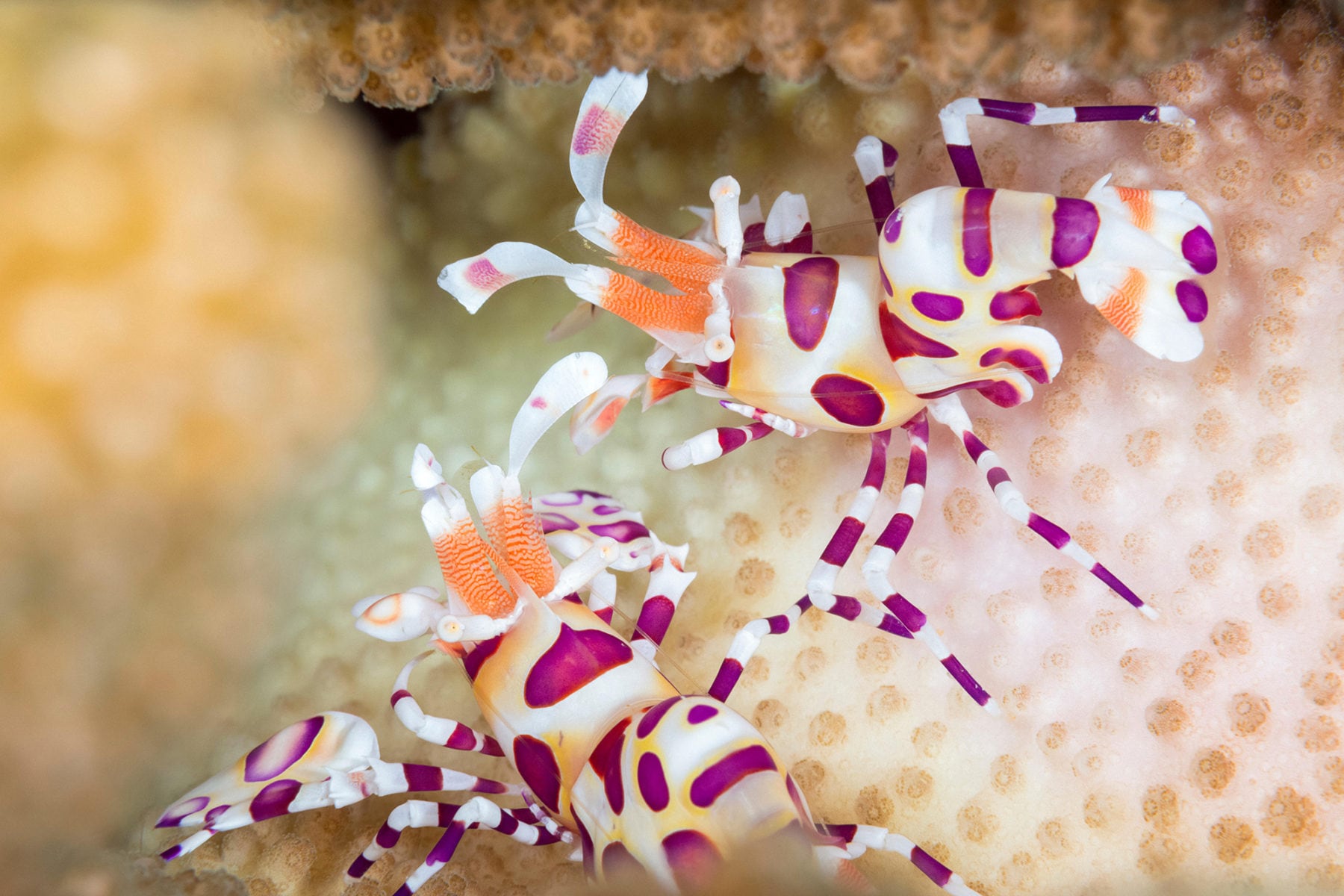The harlequin shrimp is a starfish assassin

Bec Crew
Bec Crew

WHILE MOST SHRIMP and prawn species are known as scavengers and bottom feeders, happy to consume almost anything they can get their pincers on, the harlequin shrimp (Hymenocera picta) has unusually picky taste.
Found throughout the tropical Indian and Pacific oceans, including off the north coast of Australia, the harlequin shrimp feeds exclusively on starfish. And unlike its flamboyant exterior, how it goes about this is anything but pretty.
When a harlequin shrimp comes across a slow-moving starfish, it will try to flip it over to immobilise it. It will eat the starfish alive, starting with the softest parts, such as the feet. Even if the starfish sheds one of its own limbs in a desperate bid to escape, this only weakens it for the next encounter.
And because harlequin shrimp form monogamous pair bonds, those unfortunate starfish don’t just have to contend with one harlequin shrimp – they get the double act.
Here are a couple of harlequin shrimp going to work on a beautiful red knob sea star (Protoreaster linckii):
When looking up this amazing species, you might also come across the species, Hymenocera elegans.
The classification of the harlequin shrimp is confusing, because while there is officially only one species in the genus Hymenocera, which is Hymenocera picta, some researchers think there are actually two species: H. picta from the central and east Pacific, and H. elegans from the Indian Ocean and west Pacific.
More research is needed before the species can be definitively split into two. But, as you can see in the video, there is a beautiful array of colours that the harlequin shrimp can display, including blue, cream, purple, and red.
Here are a couple that were sighted in Hawaii, with bright orange and magenta colouring:

While harlequin shrimp might be bad news for starfish, that could make them good news for coral reefs.
Crown-of-thorns starfish (Acanthaster planci) are notorious for invading coral reefs in huge numbers and destroying them, and harlequin shrimp have been found to be significant predators of these voracious pests.
Like the dusky batfish, which can clear reefs of great swathes of seaweed and algae, the challenge for scientists is figuring out just how to deploy them.




